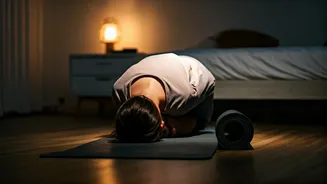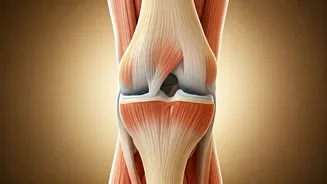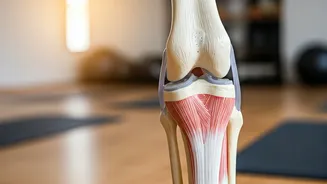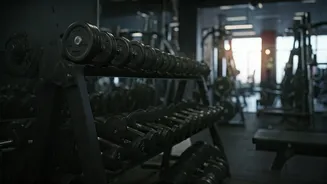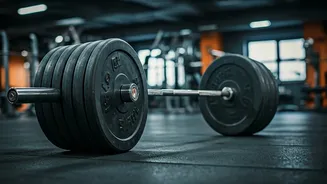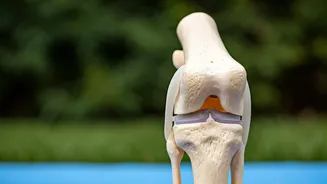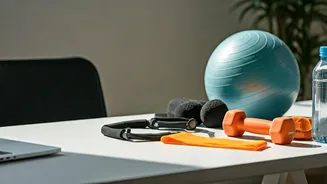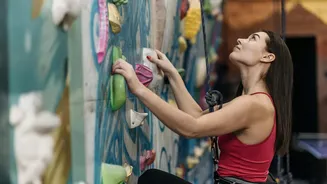Gentle Spinal Twists
Spinal twists offer a fantastic way to release tension in your lower back before you hit the hay. To perform this, lie on your back with your knees bent
and feet flat on the floor. Extend your arms out to the sides, forming a 'T' shape. Gently drop both knees to one side, keeping your shoulders flat on the bed. Turn your head in the opposite direction for a deeper stretch. Hold this position for several breaths, feeling the gentle release in your spine. Repeat on the other side. This twisting action helps to realign the spine and relieve pressure on the intervertebral discs. Regular practice can promote better spinal health and improve sleep quality by reducing discomfort.
Knee-to-Chest Pose
The knee-to-chest pose, or Apanasana, is a simple yet highly effective exercise for easing back pain. Start by lying on your back with your knees bent. Gently hug your knees towards your chest, clasping your hands around your shins or the backs of your thighs. If you feel any discomfort in your neck, you can keep your head flat on the bed. Gently rock from side to side to massage your lower back. This pose helps to stretch the lower back muscles, releasing tension and increasing circulation. Hold this position for a few minutes, breathing deeply and allowing your back to relax. This pose is particularly beneficial for those experiencing lower back pain as it gently decompresses the spine.
Pelvic Tilts for Relief
Pelvic tilts are a gentle exercise perfect for strengthening your core and stabilizing your spine. Lie on your back with your knees bent and feet flat on the floor. Ensure your lower back is pressed flat against the bed. Then, tilt your pelvis forward, creating a slight arch in your lower back. Now, tilt your pelvis backward, pressing your lower back against the bed and engaging your abdominal muscles. Repeat this movement slowly and rhythmically. This subtle movement helps to improve core strength, which is vital for supporting the spine. Additionally, it improves posture and reduces strain on the lower back muscles, thus promoting a more comfortable night's sleep.
Child's Pose Rest
Child's Pose, or Balasana, is a deeply relaxing pose that can soothe the back and calm the mind. Start on your hands and knees. Bring your big toes together and widen your knees as much as is comfortable. Gently sit back on your heels, allowing your torso to rest between your thighs. Extend your arms forward or rest them alongside your body. If you feel any strain, you can use a pillow to support your forehead. Close your eyes and breathe deeply, allowing your back to soften and release. Child's Pose gently stretches the lower back muscles and provides a sense of grounding and relaxation, aiding in reducing back pain and improving sleep quality.
Bridge Pose Benefits
Bridge Pose, or Setu Bandhasana, is a fantastic way to strengthen your back and release tension in the spine. Lie on your back with your knees bent and your feet flat on the floor, hip-width apart. Your fingertips should be able to touch your heels. Press your feet and arms into the bed as you lift your hips off the floor, engaging your glutes and core. Keep your thighs parallel and avoid arching your back excessively. Hold this position, breathing deeply, and then slowly lower your body back to the floor. The Bridge Pose strengthens the back muscles and improves spinal flexibility. This can relieve back pain and promote better circulation, making it easier to fall asleep and stay asleep.
Cat-Cow for Flexibility
The Cat-Cow pose, or Marjaryasana to Bitilasana, is a dynamic stretch that gently massages the spine and improves flexibility. Begin on your hands and knees, with your hands shoulder-width apart and your knees hip-width apart. For the Cat pose, round your spine toward the ceiling, tucking your chin to your chest. For the Cow pose, arch your back, dropping your belly towards the floor and lifting your head and tailbone. Alternate between these two poses, synchronizing your movements with your breath. The Cat-Cow pose increases spinal flexibility and improves posture, relieving tension in the back muscles. This promotes a feeling of relaxation and readiness for sleep, thus reducing back pain and enhancing sleep quality.
Supported Reclined Twist
This variation of the spinal twist provides a deeper stretch with added support. Lie on your back and bring a pillow or bolster under your knees. Extend your arms out to the sides in a 'T' shape. Gently drop both knees to one side, allowing your upper body to remain as flat as possible against the bed. Turn your head in the opposite direction for a deeper stretch. If this feels too intense, try keeping your knees bent and bringing them towards your chest before twisting. This supported twist offers a gentler approach to spinal alignment, providing significant relief from back pain. The added support of the pillow ensures you are in a comfortable position, promoting muscle relaxation and making it easier to fall asleep.
Legs-Up-the-Wall
Legs-Up-the-Wall Pose, or Viparita Karani, is a simple yet powerful restorative pose that aids in relaxation and reduces back pain. Sit close to a wall, and then gently swing your legs up the wall, positioning your hips as close to the wall as possible. Your body should form an 'L' shape. Rest your arms comfortably at your sides or on your belly. Close your eyes and breathe deeply, focusing on relaxing your muscles. This pose gently decompresses the spine, reduces swelling in the legs, and promotes blood circulation. It helps to calm the nervous system, reduce stress, and improve sleep quality, making it a valuable tool for managing back pain at night.
